Squire Vickers and 72nd + 79th Streets Stations
The "painterly" architect and his cubist, geometric designs highlight more than 300 stations, including 72nd and 79th Streets
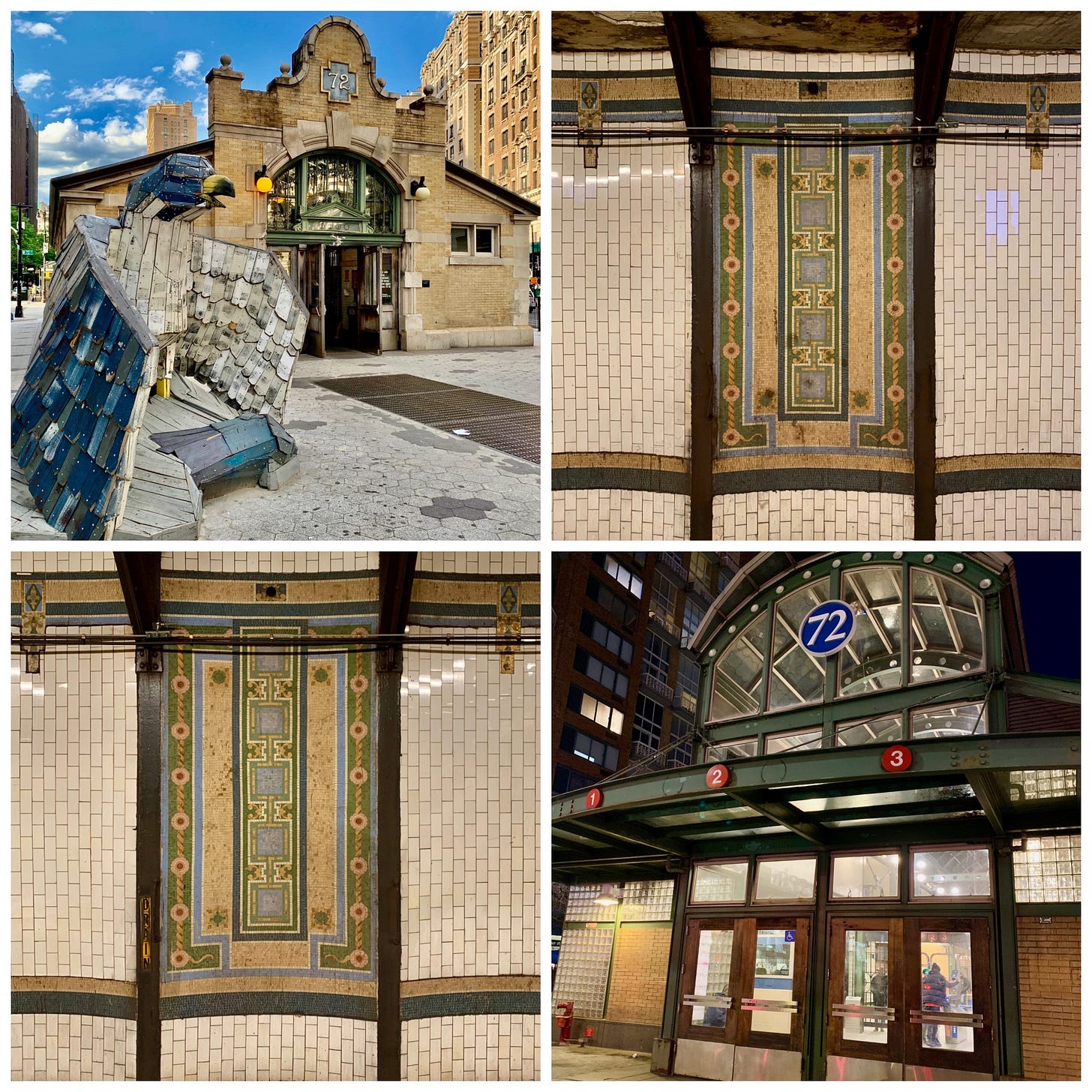
In the early 20th century, when the city’s architects and builders saw themselves less as mega-developers and more as Renaissance men, Squire J. Vickers was a force, a grandiloquent eccentric whose separate career as an avant-garde painter often bled over into his day job — his taste in colors and geometric design are still as visible in the New York subway as the day he opened each and every one of the 300+ stations he designed.
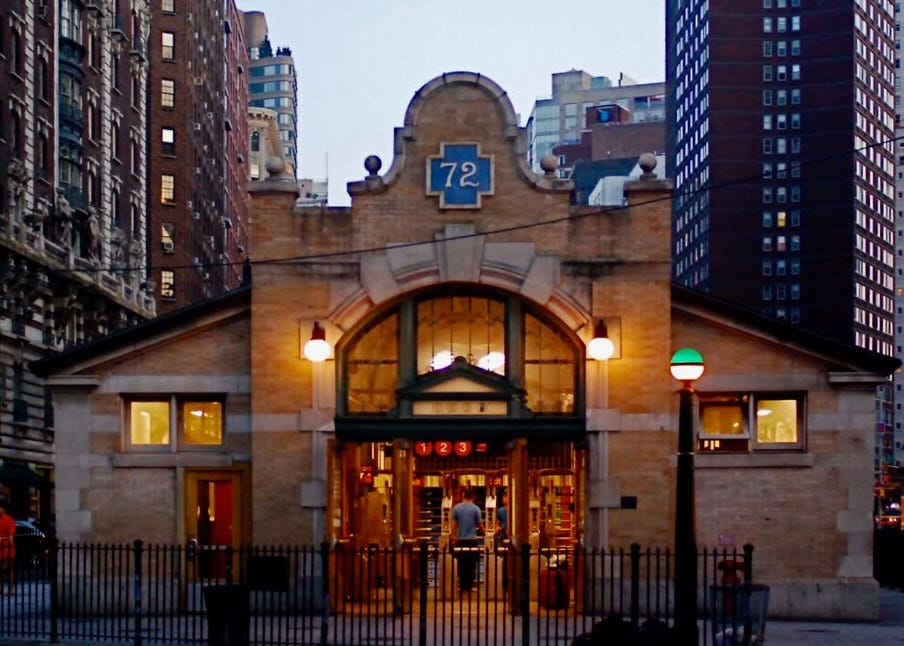
At 72nd and 79th Streets, Vickers was left with a variety of subway styles from years past, including the station houses built by Heins and LaFarge, done in the Flemish Renaissance style. His Beaux-Arts predecessors wined and dined with the Gilded Age set, with no limit set on money or artistic flourish. But by the time Vickers came along, budgets were limited and the Arts and Crafts movement had all but eliminated the tulips and fleur de-lis and every trace of Rococo that remained.It is one of six still remaining on the original Interborough Rapid Transit line, which also include Atlantic Avenue, Bowling Green, Mott Avenue, 103rd Street and 116th Street. Each station had certain features in common but incorporated distinctive elements so it could have its own identity. At both 72nd and 79th, Roman brick wainscoting separates the subway tile from the ceiling. At 79th, the architects designed yellow faience plaques with cornucopia flanking the number “79.”
At 72nd Street, Vickers enlisted tile contractor John H. Parry to create — at 50-foot intervals along the station walls — 5-by-8-foot mosaic panels with blue, buff, and cream tiles in tapestry designs. Atop each wall stands a frieze with blue and buff mosaic tiles, with scrolled motifs protruding below the frieze band. Instead of disguising the steel and concrete structure of the subway, Arts and Crafts design allowed Vickers to celebrate the subway’s underlying industrial character, exposing concrete vaulted ceilings and leaving steel girders unadorned.
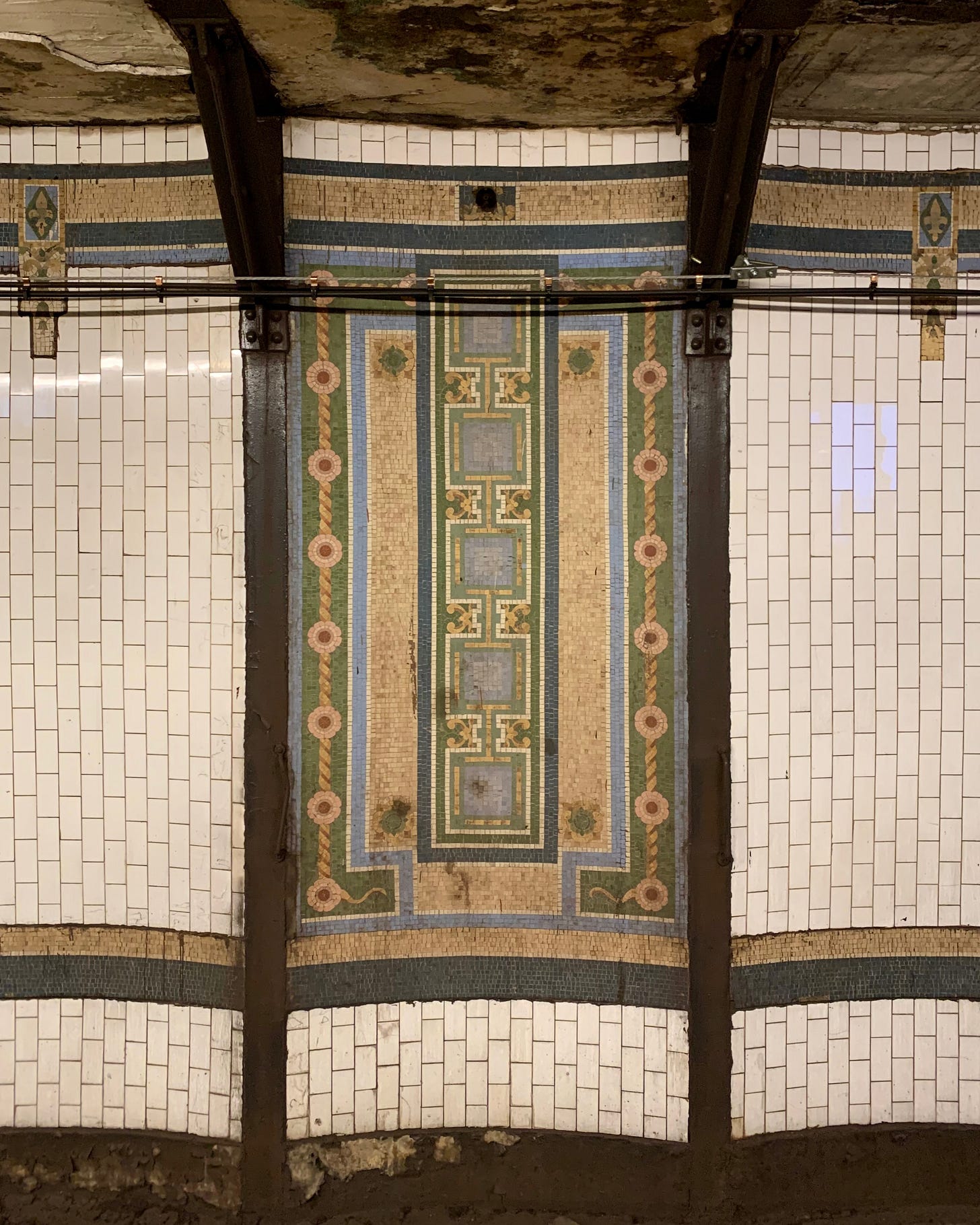
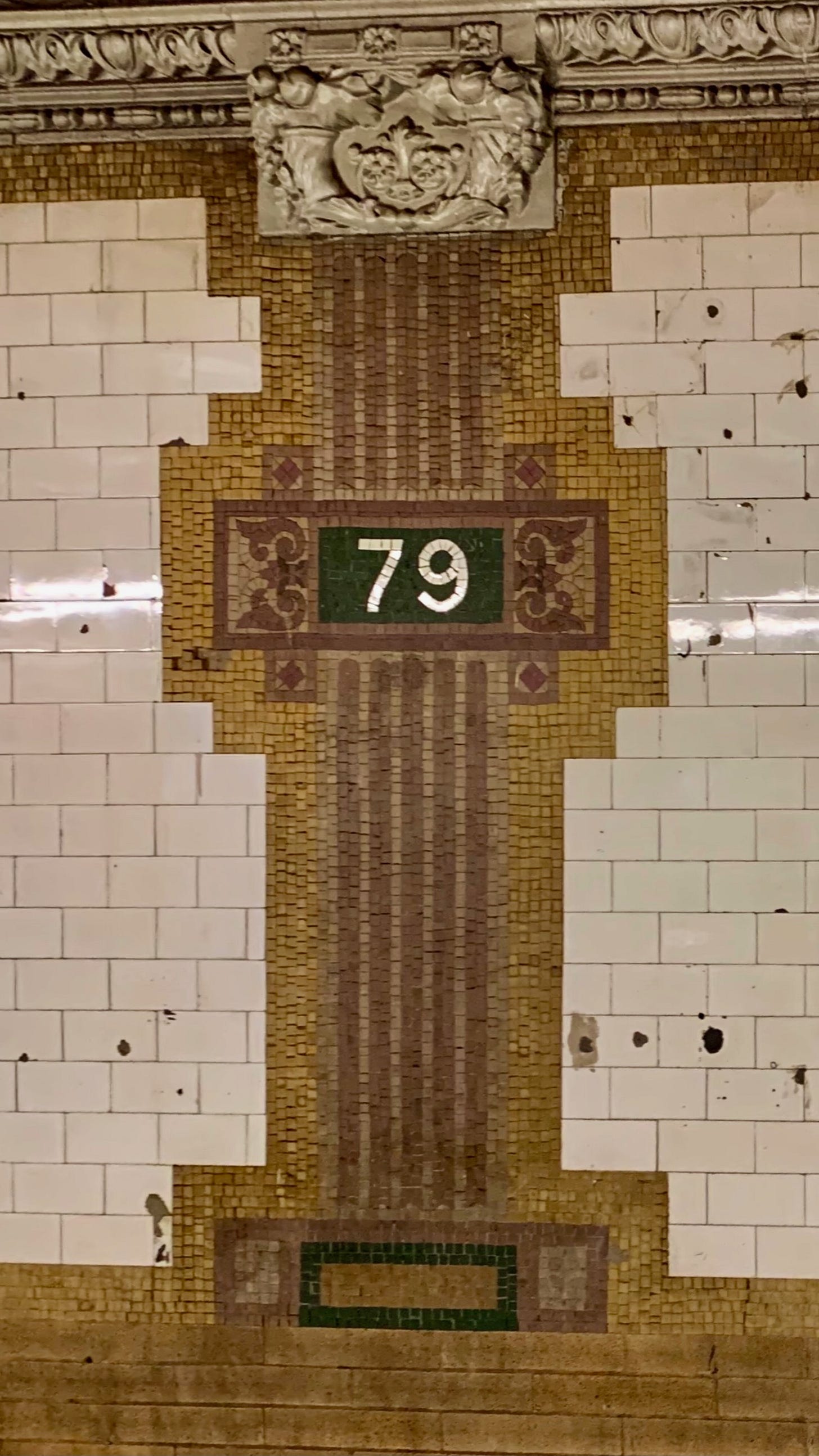
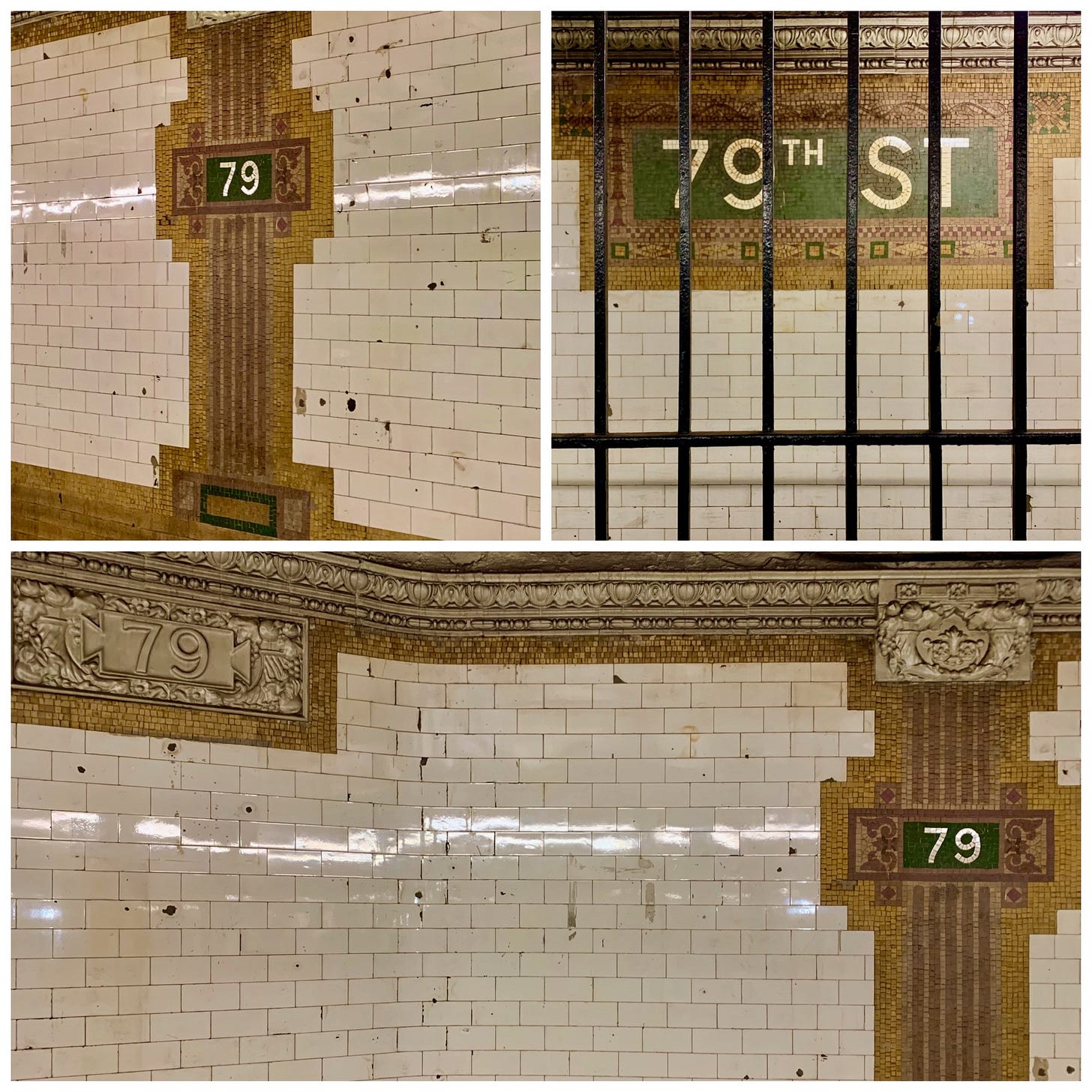
Vickers lived what he practiced on the subway. He decorated his cottage in Grand View-on-Hudson with tile work reminiscent of the subway and installed carved and painted masks and designs on walls and fences. In his studio on the property, he also found time to paint. After the 1913 Armory Show, which introduced European modernism to America, Vickers was inspired to move away from naturalistic representation towards abstraction. He began to use the simplified forms of Cubism and the expressive, non-naturalistic color of the Fauvists to capture the energy of New York City. Many of his paintings still circulate on the art market and are featured in museums, such as the Museum of Fine Arts in St. Pertersburg, Florida.
A Guide to the art of all 400 stations of the New York City subway:
From 2018 through 2021, I stopped off at 400+ stations of the New York City subway, took photographs of the public art there and researched the origin of the art, first for Instagram, then for Substack, for a 2023 Spectator article and now, hopefully, for a book and an app. My Go Fund Me is raising money to not only keep good journalism going, but also to create a prototype book, followed by an app, is up and running. A book proposal 840 Miles: A People’s Guide to the Art of the New York City Subway is currently available to anyone who might be interested in funding or representing it. You can also support my work by buying my photographs or my greeting cards on my website or my Shopify store.




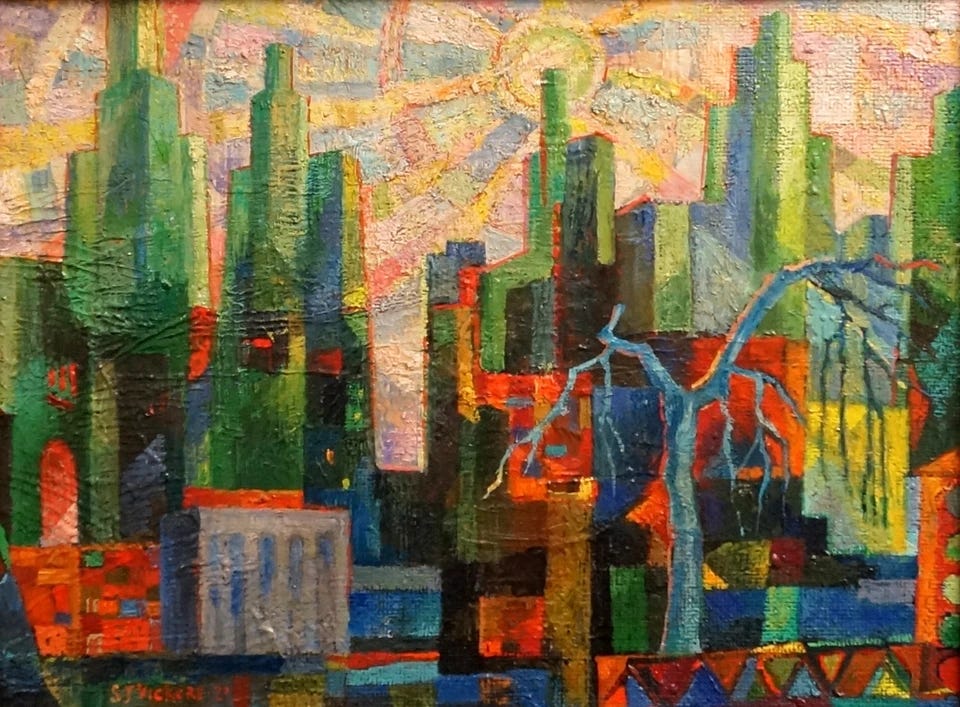



Wow randomly came across this and it looks awesome, saving to read tomorrow!